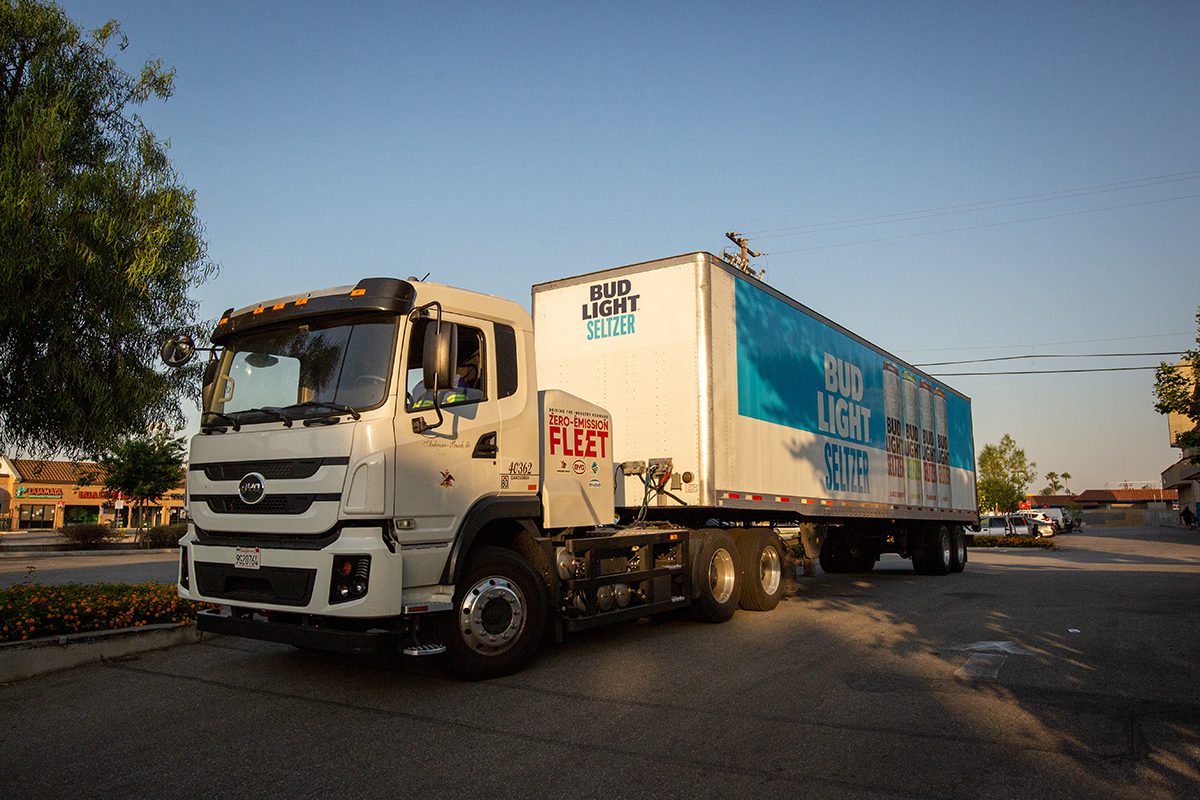Big trucks are electrifiable today. Maybe not all big trucks, but certain heavy-duty diesel trucks can be replaced with battery-electric trucks. I say this with certainty based on what we learned from the four Class 8 regional haul tractors that participated in last fall’s Run on Less – Electric demonstration.
One of these vehicles, a BYD 8TT used by Anheuser-Bush to make beverage deliveries around Pomona, California, completed the Run and the assigned job in an equivalent manner to its diesel counterpart. In fact, all 21 of these electric trucks deployed in Southern California do. The other three tractors, a Freightliner eCascadia used by Penske to haul freight from Temecula to San Diego, California; a Peterbilt 579EVi used by Biagi Bros. to run shuttle loads between Napa and Sonoma, California; and a Volvo VNR used by NFI on routes between Chino, California, and the Port of Long Beach all performed as expected, but as of 2021 did not have the range to complete the full day’s work of their diesel incumbents.
Even with that, NACFE thinks that heavy-duty, regional-haul, battery-electric trucks are viable solutions today for improving fleet freight efficiency and helping achieve sustainability goals on short and some medium-length routes where daily mileage is less than 200 miles with one shift return-to-base operations where overnight vehicle dwell time allows for lower cost overnight charging. We also think that other variations of duty cycles may be very viable if there is the possibility of en-route charging, which would extend vehicle range.
Prior to the Run, we predicted that 70% of the heavy-duty regional-haul market segment would be electrifiable. Given the more detailed analysis, interviews with industry, and further research for this report, we now consider this market segment to be 50% electrifiable with lower average daily miles resulting in the avoidance of nearly 29.4 million metric tonnes of CO2e annually (e equals carbon dioxide equivalent). We estimate that if the entire market segment — with an average of 250 miles per day — were electrified, 97.8million metric tons of CO2e would be eliminated.
In addition to CO2 reductions, there are a lot of other benefits to battery-electric vehicles, including potentially less maintenance from fewer parts and driver acceptance. The experience from the Run on Less – Electric interviews with drivers and their management teams is that drivers love electric trucks. They universally stated the electric vehicles were better driving experiences versus diesels for a number of reasons, including the fact that they are quieter, they offer better acceleration, and are less fatiguing. And, of course, there is the cool factor and positive company image that drivers talked about.
But we aren’t naïve, and we recognize that fleets will face challenges when moving to battery-electric vehicles in heavy-duty regional-haul applications, not the least of which is their higher purchase price. There are also challenges around charging and the necessary charging infrastructure, battery weight, and range. But we believe the industry will find ways to respond to these challenges as the technology matures.
Based on data from four heavy-duty regional-haul fleets that were in Run on Less – Electric and additional research and interviews the study team performed for the report Electric Trucks Have Arrived: The Use Case for Heavy-Duty Regional Haul Tractors, we came up with five key findings and 17 lessons learned.
The findings include:
- NACFE considers short and medium regional-haul heavy-duty tractors electrifiable today with their range of 200 miles, about 3,000 to 4,000 lbs. of freight capacity penalty compared to diesels, and improving total cost of ownership when monetizing all benefits.
- Regional-haul tractors return to base daily, giving fleets confidence about making investments in charging infrastructure.
- Operational changes such as the choices of the truck for each daily route, en-route opportunity charging, driver incentives, and managed charging are all examples of actions to improve the TCO of heavy-duty regional-haul battery-electric trucks.
- The drivability (particularly in getting up to speed), quietness, and other aspects make these trucks ones that drivers prefer over diesels, improving driver attraction and retention for fleets.
- Some medium and longer regional-haul duty cycles pose more demanding requirements for current battery-electric trucks, but the next generations of products are bringing larger battery packs, better performing systems, and lighter solutions to improve the TCO.
Battery-electric vehicles are a good fit for many applications, including some Class 8 regional-haul operations, and we urge fleets operating those duty cycles to begin exploring how electric trucks can work for them.



